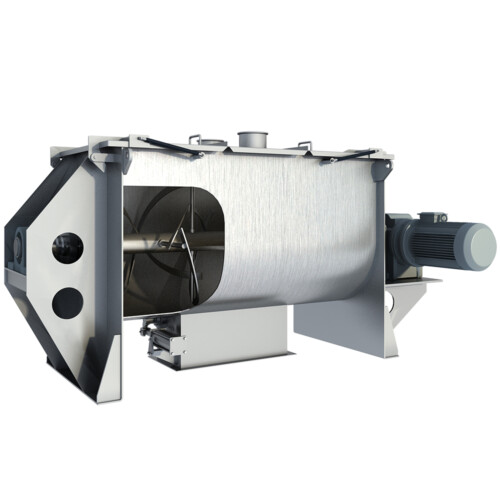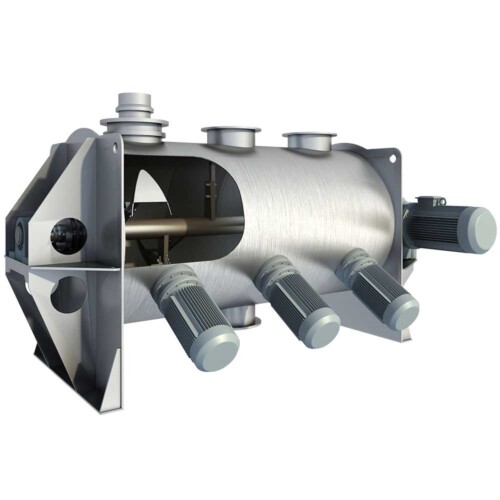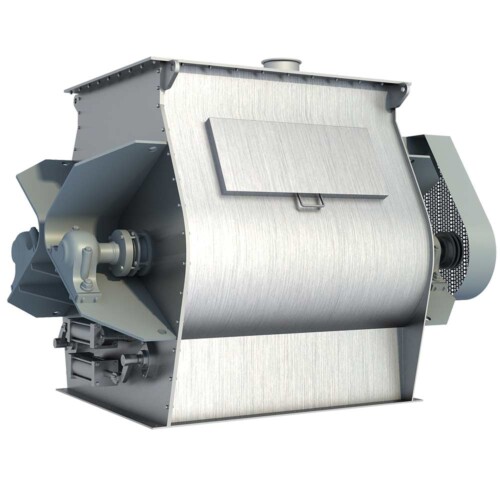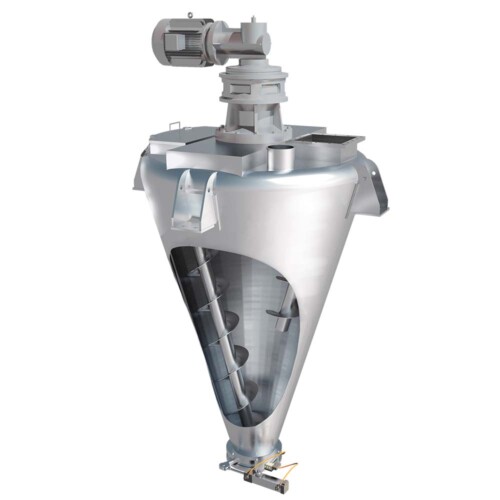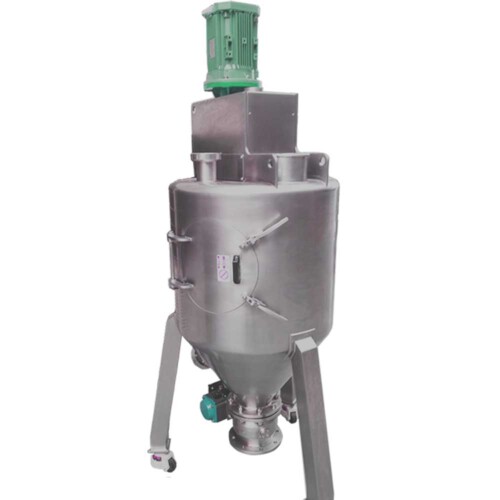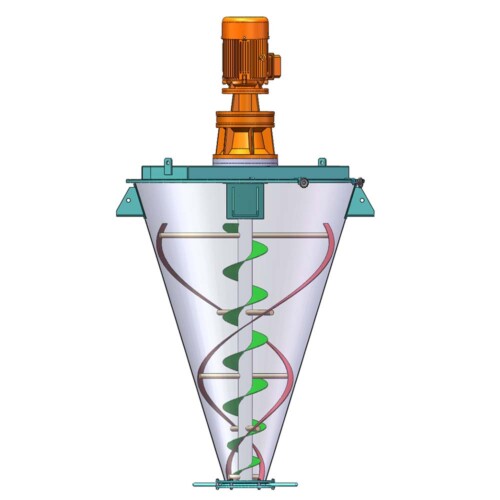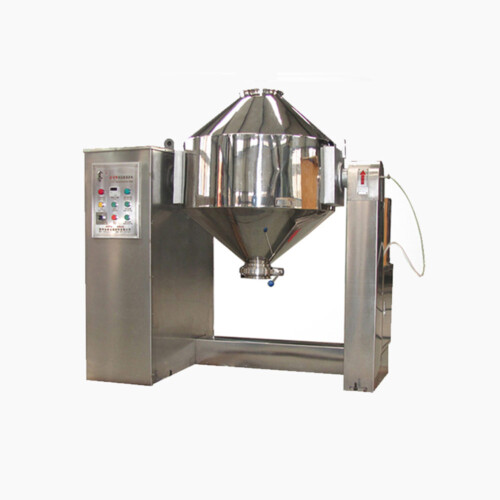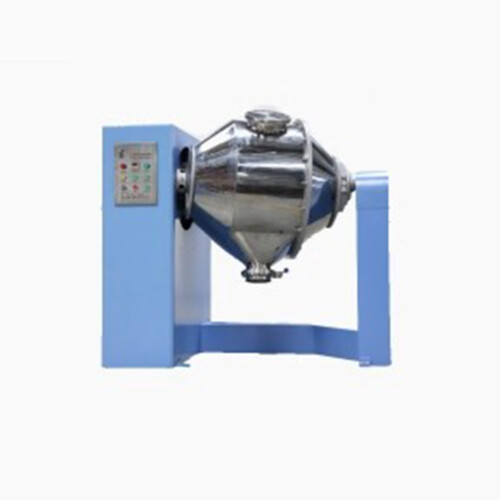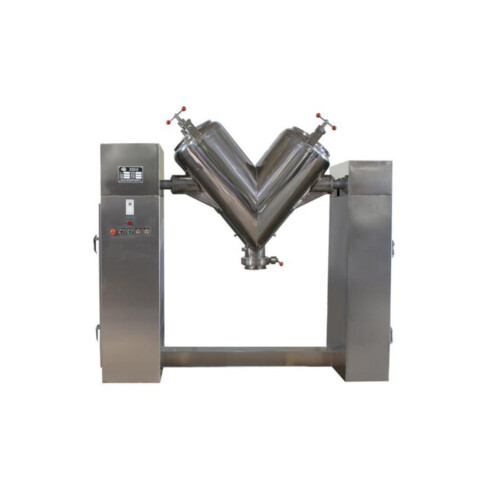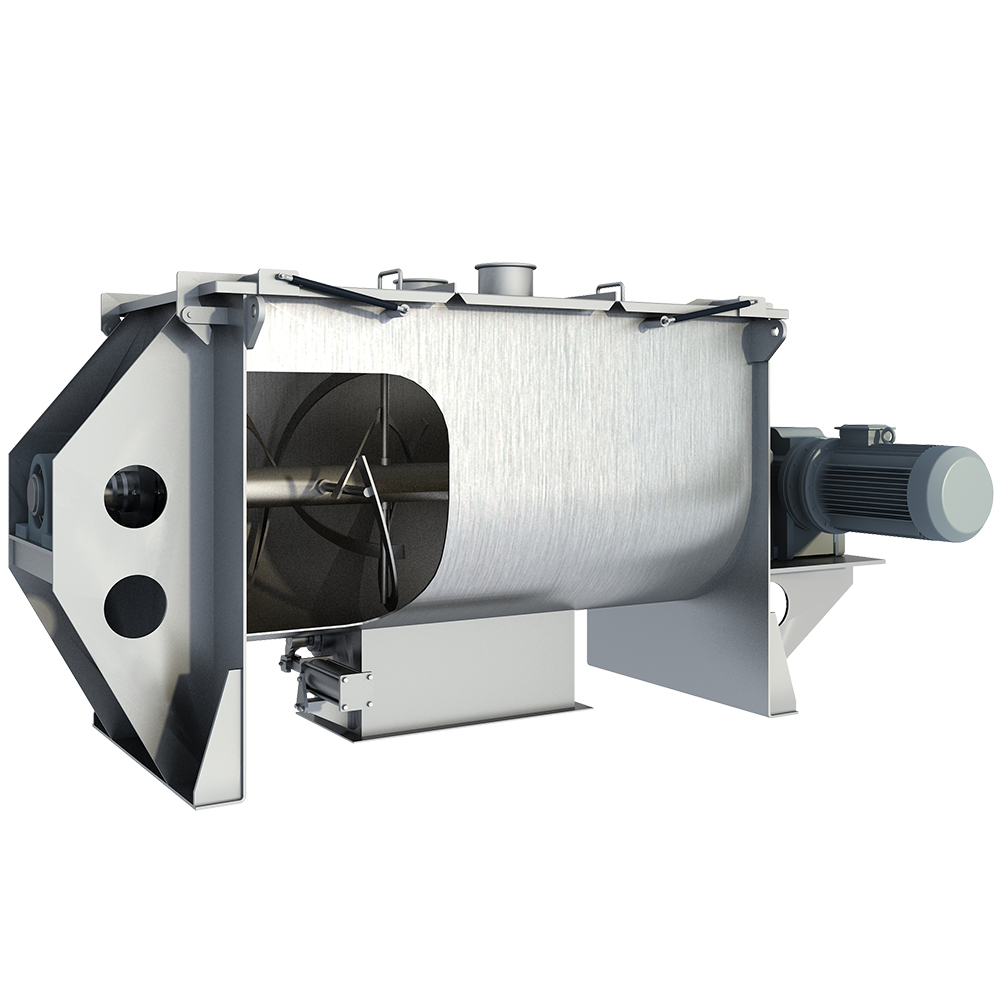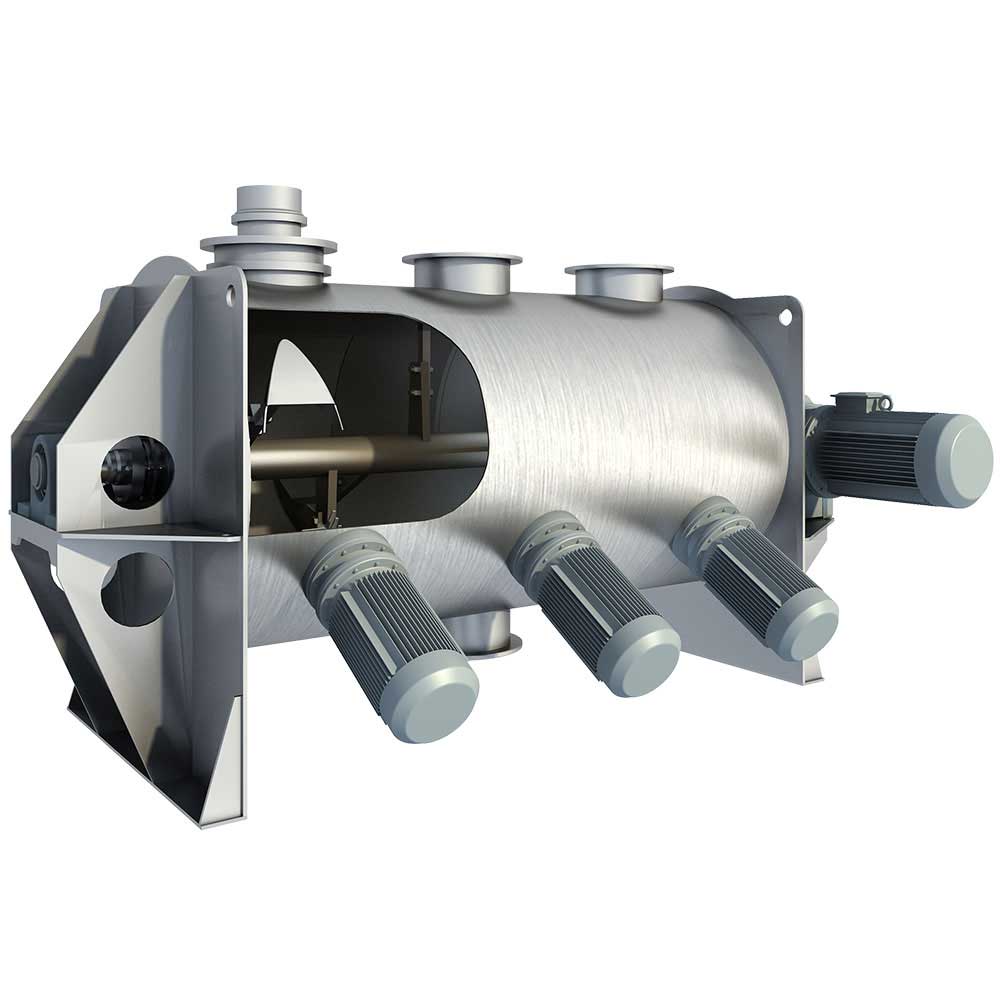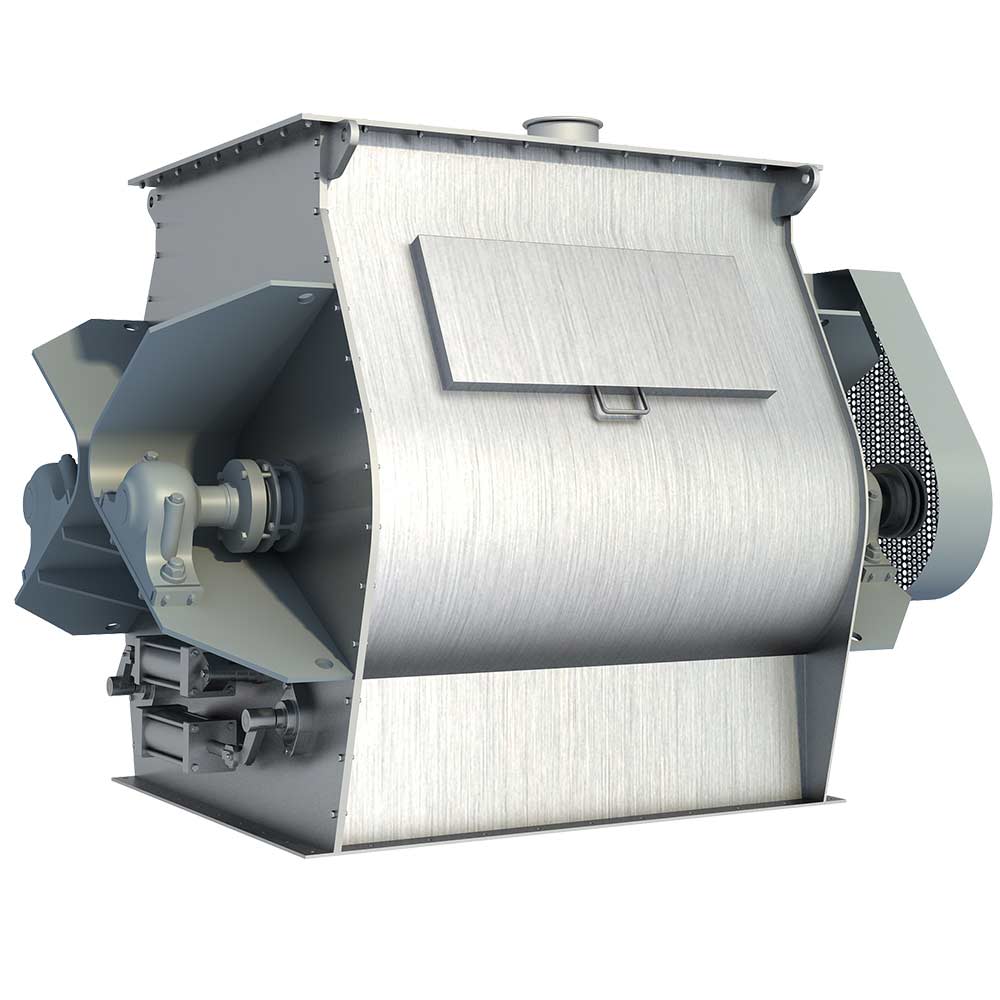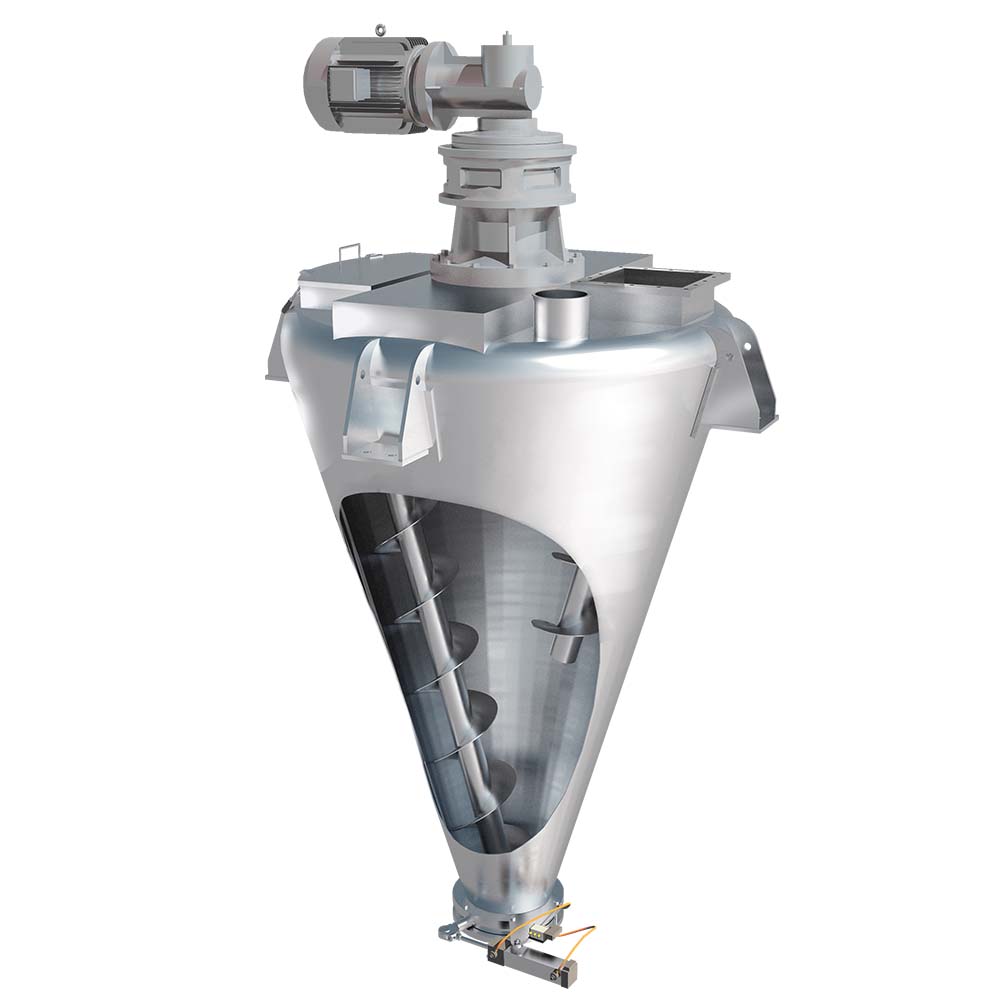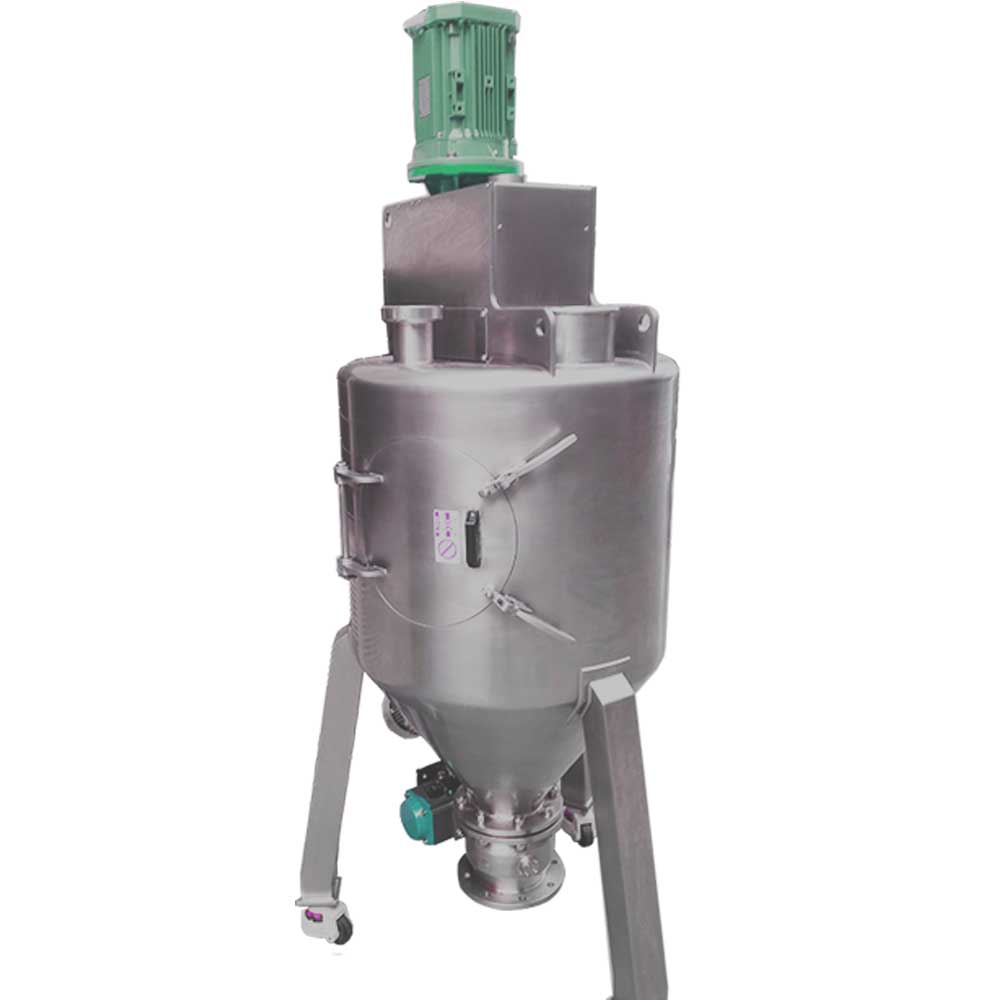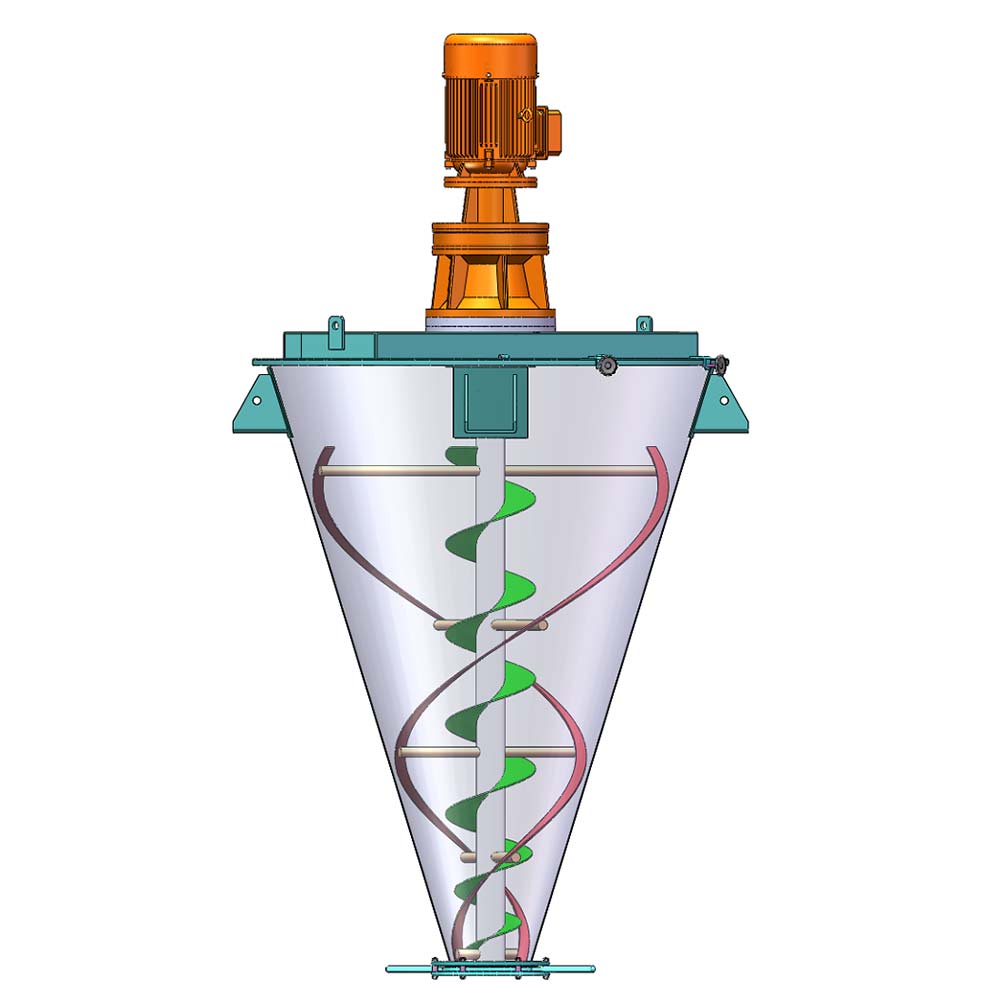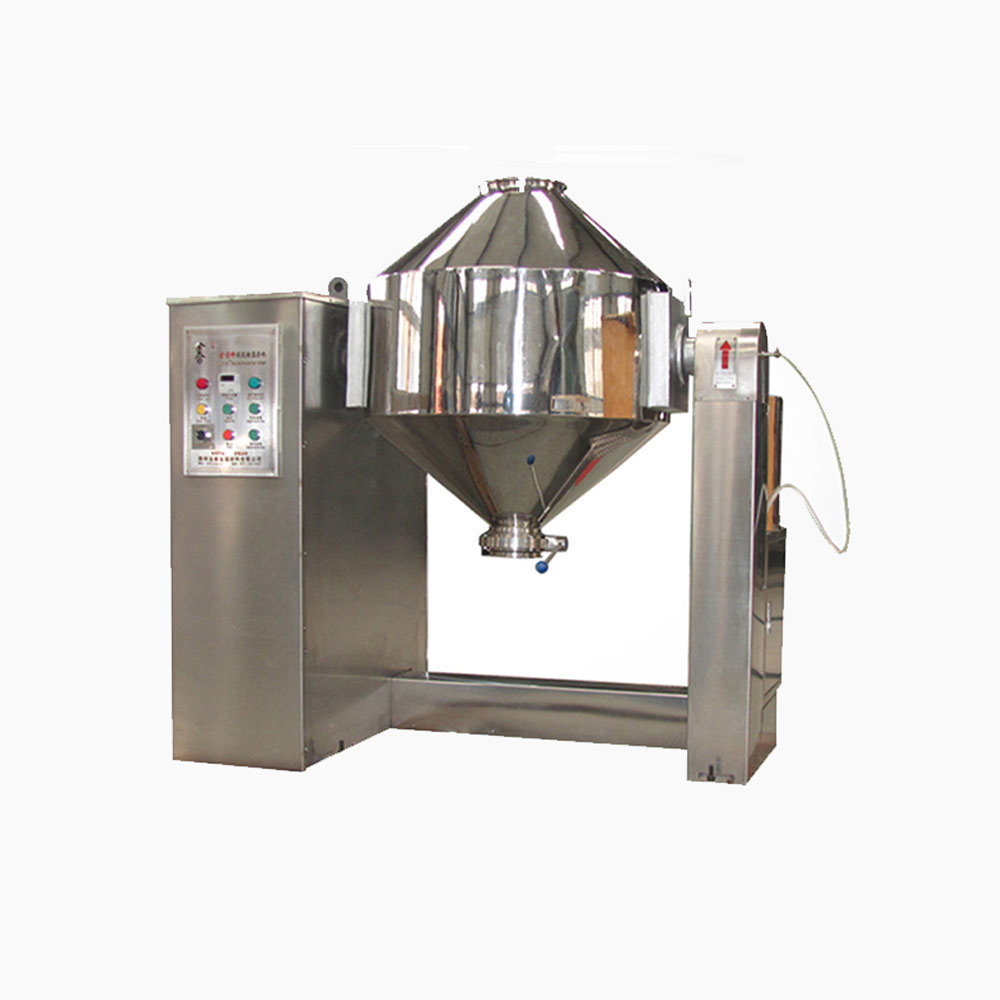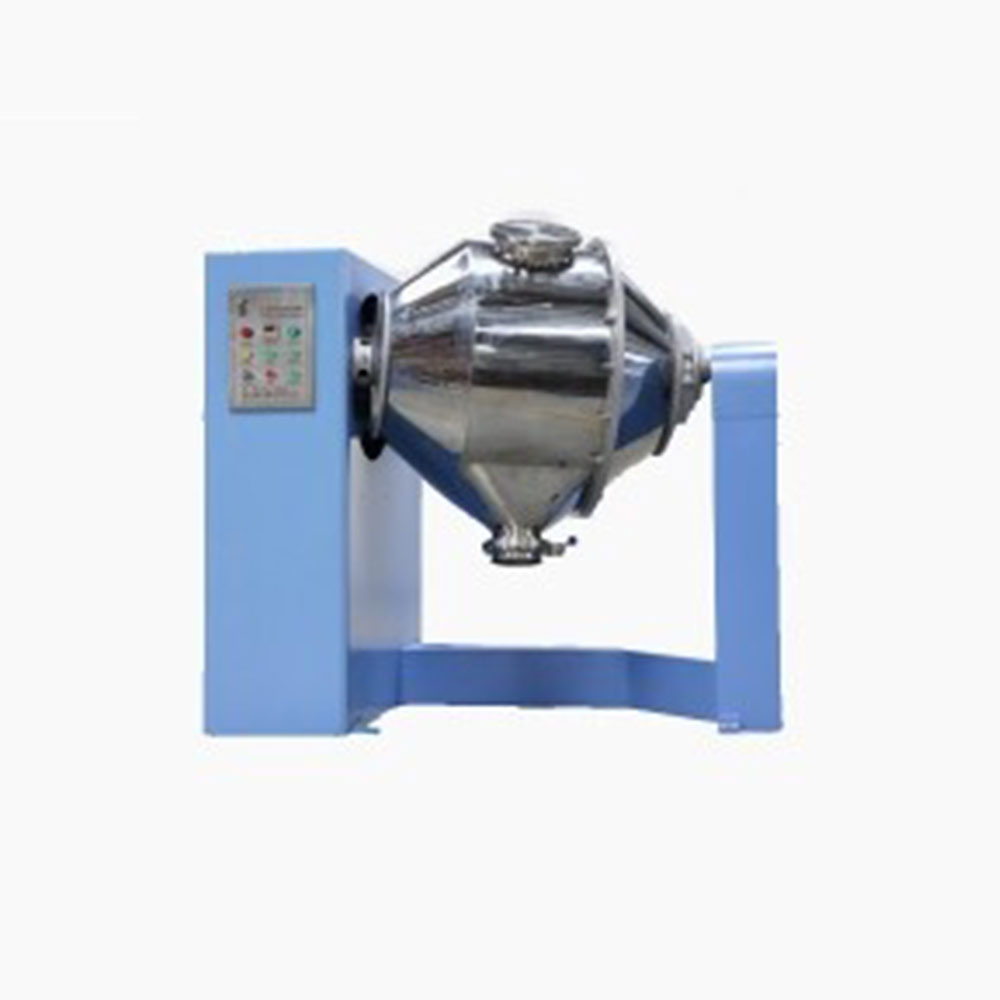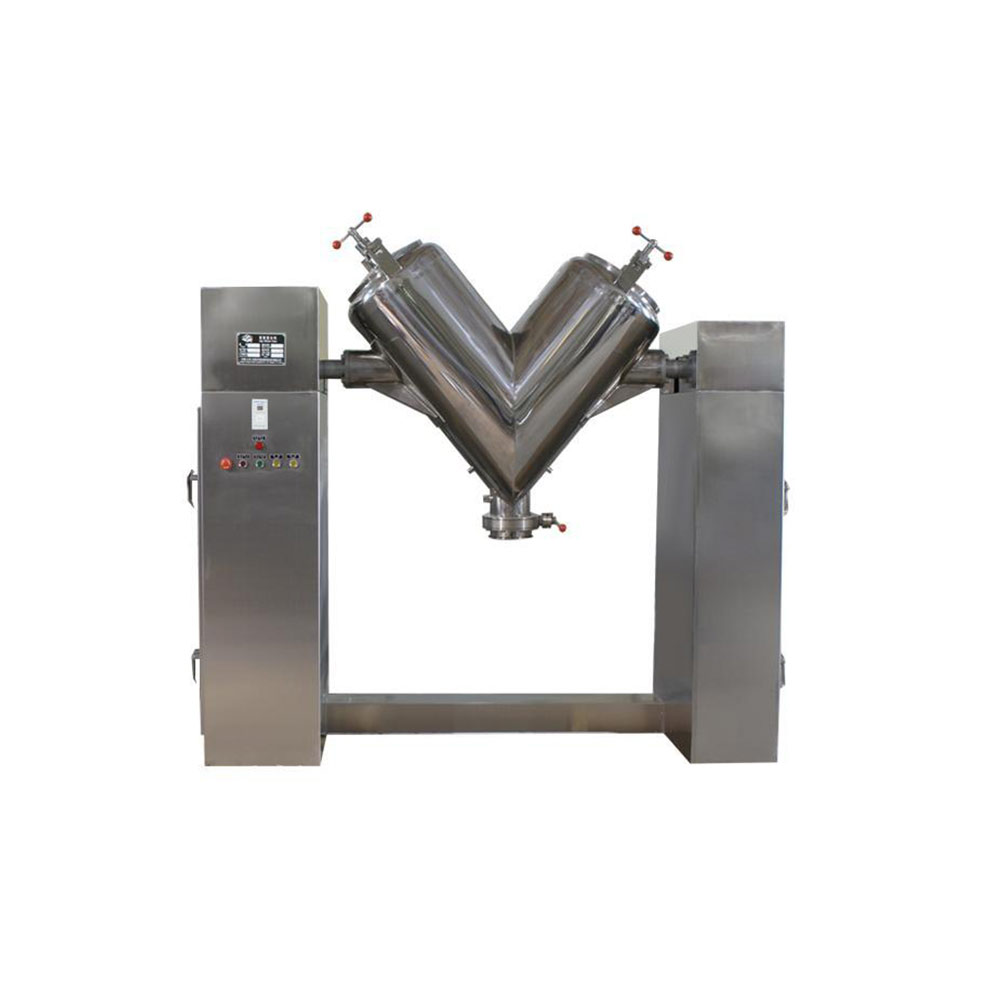Ask An Expert
Frequently Asked Questions
Yes, We can supply simple stand alone panels or automated PLC controlled systems. We normally install and test all controls on our mixers before they are shipped.
Yes, we normally test the mixers before they are shipped and mark out the wire need to connect on the control box.
We manufacture specialty mixing equipment for powder & bulk materials. Included are ribbon blender, plough mixer, conical screw mixer, twin shaft paddle mixer, V blender, double cone blender and other auxiliary equipment such as screw conveyor, quantitive auger filler.
We sell across the world, our cusotmers distribute 5 continents.
Share Us With Your Network
Using a conical screw mixer for more than mixing
Do you need to mix as well as dry or agglomerate your material? A conical screw mixer can be adapted to handle processing tasks in addition to mixing, which can eliminate the need for additional equipment in some applications. This article introduces you to conical screw mixers, then explains how the mixer can be adapted handling other tasks while mixing, such as heating and cooling, drying, agglomerating, de-agglomerating, causing or preventing chemical or physical reactions, or storing. The last section discussed selecting a conical screw mixer for your application.
Mixing can be done with a batch mixer or a continuous mixer. A batch mixer (i.e. ribbon blender, plough mixer, conical mixer) is a stand-alone vessel in which all the ingredients are loaded, agitated until homogeneously dispersed or mixed, and then discharged. The mixer is suited to applications requiring high mixing accuracy and validation of batch-to-batch consistency. Because ingredients are typically added manually, the ingredient proportions can be accurately controlled while saving the cost of proportioning equipment. A continuous mixer is a process line vessel that is continuously fed the correct proportions of ingredients; the ingredients are quickly mixed, sometimes with intense agitation, as they travel through the vessel in one pass, and the mixture is discharged to the next equipment in the process. The mixer is suited to mixing large amounts of material when the degree of homogeneity isn’t highly critical and to extruding materials when few ingredients are mixed and short dwell times and intense agitation don’t impair the process.
A batch mixer is easiest to adapt for handling other tasks while mixing because the mixer has a fully enclosed vessel. The enclosed vessel protects the surrounding environment and allows accurate control of process parameters, such as total mixing or residence time, the sequence in which ingredients are added, and agitation intensity.
About conical screw mixers

Figure 1: Conical Screw Mixer
One of the most versatile batch mixers, the conical screw mixer (Figure I ), also called a vertical orbiting screw mixer or a nauta mixer, is often designed to handle other tasks as it mixes. The mixer can handle either all dry ingredients, such as powders, or dry plus liquid ingredients, such as slurries and pastes. Though a batch mixer typically handles smaller quantities than a continuous mixer, a conical screw mixer can be designed to handle more than 2 tons or 600 cubic feet of material. Even with such a large capacity, its manual feeding method permits highly accurate ingredient and additive proportioning. For instance, in one application, a powdered soup mix manufacturer uses a conical screw mixers to mix 2-ton batches of recipes with up to 30 ingredients, some added in quantities as small as 1.5 ounces.
A conical screw mixer’s vessel is shaped like an inverted cone (Figure 1); the material inlet is at the vessel’s top and the material outlet is at the bottom. A drive motor on top of the vessel is linked to an orbital arm inside the vessel’s top. A screw is mounted below the orbital arm, forming a cantilevered screw (as shown in the figure), which allows near-complete discharge of the vessel contents. For more drive power when handling large batches or viscous materials, the screw can also be supported at the bottom.
In operation, material is loaded into the mixer and the drive motor moves the orbiting arm and, in turn, the screw, around the vessel’s inner wall. As the screw orbits the vessel, the screw rotates, directing the material upward. Several factors contribute to the mixing effectiveness:
- The screw’s orbital movement continuously exchanges particles – those captured by the screw’s flights and those outside the flights – over the screw’s full length.
- The clearance between the wall and the screw prevents the material from simply being rotated at the same speed as the screw and conveyed up the vessel wall.
- The vessel’s conical shape causes the material outside the screw flights to sink by gravity and mix with the material directed upward the flights.
As a result, the conical screw mixer gently produces a high degree of mixing that can be maintained for long periods without segregating the material, even when the vessel is only partially filled. After mixing is completed, the material is discharged.
Screw variations. The conical screw mixer can be equipped with different screw arrangements for various applications. For instance, a high-speed rotor fitted between twin screws (Figure 2a) provides extra kinetic energy for efficient high-speed mixing. This arrangement is well suited to mixing fat into dry materials, homogenizing pasty materials, dispersing liquids in dry solids, dispersing pigments and colorants into a base material, and de-agglomerating materials.
A satellite screw (Figure 2b) arrangement includes a second screw that orbits opposite the standard screw, reducing mixing times. This arrangement is well suited to mixing materials that are likely to segregate, such as those with varying bulk densities or particle sizes or both.
A tapered screw (Figure 2c) has wider flights at the top than the bottom; the screw requires more power but reduces mixing time so much that a smaller mixer vessel can be used, which increases material throughput per hour while requiring less floor space. The screw is well-suited to handling materials with very low internal friction.

screw arrangements
Cleaning. A conical screw mixer is relatively easy to clean and set up for product changeovers because the vessel’s vertical conical shape is virtually self-emptying. In addition, no bearings or fasteners in the mixer contact the material. The mixer doesn’t degrade or segregate the material or generate heat that could scorch the material, eliminating associated problems with cleaning material buildup. Cleaning can be simplified by using a cantilevered screw, because the screw requires no bottom support that can collect material or block the bottom outlet, or by installing an inspection door or full-bore outlet valve at the vessel’s bottom to facilitate total emptying.
To meet sanitary requirements for fine chemical, pharmaceutical, and food applications, the mixer can be equipped with various cleaning system. These include clean-in-place internal wet cleaning systems, such as a troll ball (a hollow rotating ball, mounted with a spray nozzle, that moves around the vessel as the nozzle discharges a cleaning liquid) or a lance or spray nozzle (a hand-held pipe with a nozzle through which a cleaning liquid is discharged). Other ways to ensure clean operation include using a fully enclosed, non-lubricated timing belt drive inside the orbital arm, which prevents lubricants from contaminating the material, and, for applications requiring microbiologically clean operation, using an electro-polished interior finish.
Adapting the conical screw mixer to do more than mix
By adapting the conical screw mixer to meet various process requirements, the mixer can mix while heating or cooling, drying, agglomerating, de-agglomerating, causing or preventing chemical or physical reactions, or storing. Using the mixer for multiple tasks minimizes material handling requirements. The following information describes how the mixer can be adapted to handle other processing tasks as it mixes.
Heating and cooling. The mixer can be adapted to heat or cool materials by encasing the vessel in a jacket. The jacket is filled with either a heating medium (hot water, steam, or a thermal oil) or a cooling medium (a brine cooled by a refrigerant).
The jacket can be one of two types: labyrinth or split-pipe coil. A labyrinth jacket consists of flat metal flow bars arranged in a labyrinth pattern on the vessel’s conical section (which forms the heat transfer surface). The medium follows the labyrinth pattern through the jacket rather than following a direct path, which can sometimes create hot and cold spots in the jacket and consequently slow heat transfer or cooling in the vessel. The split-pipe coil jacket (Figure 3) consists of individual lengths of small diameter split pipe welded to the vessel’s exterior wall. The split-pipe coil jacket circulates the medium at high velocity and with greater pressure and turbulene than labyrinth jacket, and provides a direct path for the medium to circulate, reducing hot and cold spots. Although the split-pipe coil jacket can be designed for very high pressures, it doesn’t provide the same amount of direct heat transfer area as the labyrinth jacket.
While heating with either type of jacket, the screw’s mixing action continually exchanges the warmer material along the heated vessel wall with cooler material from near the vessel’s center, distributing heat evenly throughout the material bed and causing a steady heat flux( the amount of heat transferred across a surface of unit area per unit time). For rapid heating( for instance, for sterilizing cocoa powder or spices or extracting essential oil from coffee beans), steam can be added to the vessel bottom, provided the material in the vessel can tolerate the steam. This method, which can raise a 1-ton batch’s temperature by 175 °F in less than 5 minutes, quickly heats the material as it contacts the stream, while the mixer’s action evenly distributes the intense heat to prevent scorching or degrading the material. For much gentler heating (for instance, for heating a heat sensitive pharmaceutical powder), the screw can be heated. In this method, a heating medium circulates through the orbital arm into the screw’s hollow drive shaft, slowly transferring heat to the material as it contacts the screw. However, the heated screw must be used with a non-lubricated timing belt drive, because a lubricant and heating medium can’t be located together within the orbital arm.
For cooling, the cooling medium flows through the jacket while the screw’s mixing action continually replaces the cooler material along the vessel wall with the warmer material from near the vessel’s center, evenly cooling the material bed. A cooling jacket is commonly used when mixing a heat sensitive material.
For maximum flexibility, the vessel can be encased with two separate split-pipe coil jacket circuits, one for a heating medium and one for a cooling medium. The separate circuits permit the mixer to be used, for instance, to cool down heat-sensitive materials after vacuum drying. The circuits also allow the use of incompatible heating and cooling media(for instance, steam with a cooling brine, or an organic heating medium with a water coolant) with our risking that the media will cross-contaminate each other or corrode the jacket.
Drying. The conical screw mixer can also be adapted for drying and other thermal processes (such as solvent recovery). The mixer can use either a heat jacket or a hot air stream. When using a heat jacket, a dust collector is typically located at the unit’s top. In operation, the screw rotates and orbits around the inner vessel wall so that particles contacting the heated vessel wall are continuously exchanged with others and the drying heat is uniformly distributed through the material, preventing dead spots where material can be scorched or degraded by the heat. The screw’s action also creates a passageway through the material bed so that the moisture vapor released from the material can flow upward to the dust collector, which separates the dust and vapor and vents the vapor into the air.
When using a hot air stream, a hot air inlet is typically located near the vessel’s bottom and a dust collector is located at the vessel’s top. In operation, hot air flows through the inlet, percolates upward through the material as it’s agitated by the screw, and sweeps moisture upward to the dust collector, which separates dust from the vapor and vents the vapor. Again, the screw’s continuous action helps ensure that particles contacting the hot air are continuously exchanged with others and that the drying heat is uniformly distributed through the material, preventing dead spots.
For further drying efficiency or for recovering solvents, the mixer can be used with a vacuum system. The unit has a heat jacket and is linked to a vacuum system with one (or more) condenser and, if used for solvent recovery, a collection vessel. The unit operates like a heat-jacketed conical screw mixer used for pressure drying except that the vacuum system quickly reduces the saturated vapor pressure by removing the moisture vapor from the vessel and carrying it to the condenser, which condenses the water vapor or recovers the solvent; the recovered solvent flows into the collection vessel. Vacuum operation permits drying at much lower temperatures than is possible in a pressure dryer; this saves energy and can protect heat-sensitive materials. The screw’s low intensity mixing action also prevents shear-sensitive materials from hardening into prills , which can occur in a dryer using high speed agitation.
In one application, a conical screw mixer adapted for vacuum drying is used as part of a polyvinylchloride (PVC) plastic recycling process. The used PVC‘s mineral spirits content must be reduced from 28 percent to 5 percent before the PVC can be reprocessed. During drying, when the PVC reaches a transitional point between the consistency of a tacky paste and a powder, the orbital arm and screw are under extremely high torque. Thus, the unit has two orbital arm speeds. As torque increases, the arm speed gears down from 1.2 to 0.6 rpm and the screw rotation speed also gears down from 80 to 40 rpm. After drying for 10 hours, an 1,800-pound batch containing 28 percent liquid dries to about 1,350 pounds containing 5 percent liquid. The final product is an agglomerate with an average particle size of about 0.2 inch.
Equipping the vacuum dryer with a heated screw or microwave heater can shorten drying times and improve the product quality. In addition to components for heating, moisture removal, and solvent recovery, a comprehensive conical screw vacuum drying system can include a cooling jacket for cooling heat sensitive materials after drying.
Agglomerating. Installing a spray nozzle inside the conical screw mixer’s top (Figure 4) adapts the unit for spray agglomerating, which produces agglomerates with controlled content, such as granules and chemical pellets, coated seeds, and other coated particles. In operation, the screw mixes the dry material and the spray nozzle sprays a liquid onto the material, coating it to form agglomerates of the desired size. The screw’s gentle mixing action thoroughly mixes the material to ensure it’s evenly coated. The agglomerates are then discharged and dried, typically in a fluid bed dryer. In one operation, the conical screw mixer is used to form bite-size dog food by spraying fats and other palatable liquids through the spray nozzle onto a batch of small cereal kernels until the desired size agglomerates form. The unit can also be used for dedusting very fine material.
De-agglomerating. Installing a lumpbreaker, such as a high-speed beater bar, on the conical screw mixer’s vessel wall or through a port in the vessel’s bottom adapts the mixer for breaking up undesirable lumps or agglomerates, especially in drying applications. In a conical screw mixer used for drying, installing a lumpbreaker helps to break open large particles, exposing their moist interiors to the heat and speed drying.

conical screw mixer with spray nozzle for agglomerating
Causing chemical or physical reactions. The conical screw mixer can be used to mix while causing a chemical or physical reaction. The vessel serves as the reactor and the screw serves as the agitator. In operation, the screw mixes the solid material for a specific period. A catalyst or active ingredient is manually fed into the mixer at the ppropriate point during mixing, causing the reaction. (Manual feeding permits mixing to proceed at any speed for any length of time before the catalyst or active ingredient is added to cause the reaction.) The screw’s orbit around the vessel’s inner wall eliminates any need for a baffle, which is required by a conventional reactor to direct material into the agitator’s path. In a typical application, the mixer is used to add an acid to an inorganic compound, such as lead oxide, titanium dioxide, or tin oxide. to form a metal salt.
Storing. The mixer can also combine mixing with storing. In this application, called master batching, the vessel is very large. In operation, several batches of previously processed materials are loaded into the mixer, which mixes the batches; when another material is added, the mixer homogenizes the materials to form one uniform batch. The unit functions as a live storage vessel, because the screw’s mixing action keeps the stored material from compacting and bridging, permitting the material to be stored over a long period. The unit’s conical shape permits total self-emptying when the material is discharged.
Selecting a conical screw mixer for your application
Adapting a conical screw mixer to perform other processing tasks as it mixes can eliminate the need for additional equipment in your processing line, saving capital costs, labor costs, and floor space. To select a unit that can handle your material and production requirements, work with a conical screw mixer manufacturer. The manufacturer can recommend a particular mixer design based on experience with similar materials and requirements. Generally, the manufacturer can run laboratory trials using test equipment to predict scale-up values and other in-installation-related factors for the equipment you select.

